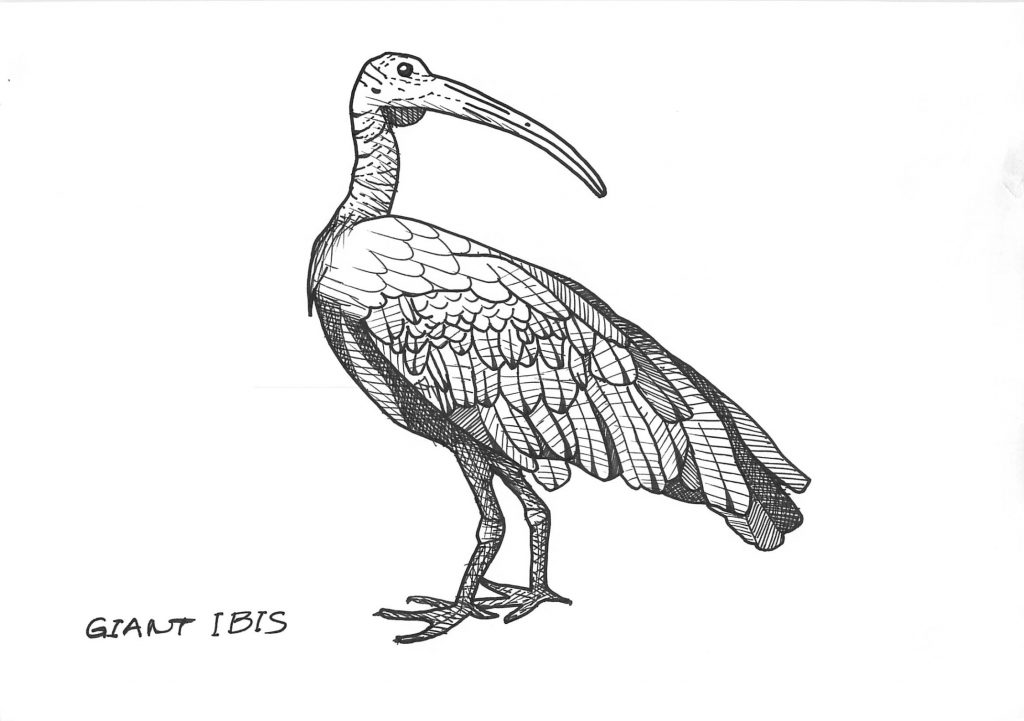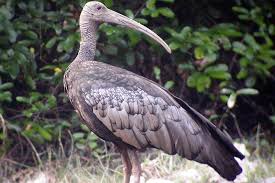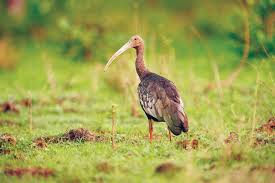
Giant Ibis
(Thaumatibis Gigantea)
The Giant Ibis is twice as large as any other Ibis. Only 250 remain in northern Cambodia, where it is the national bird and also in tip of Laos. they are now extinct in Vietnam and Thailand. The females lay two eggs at the start of the rainy season, which is usually around June, and nest in trees. They inhabit the Cambodia dipterocarp forest. Threats: deforestation, wetland drainage for agriculture and huntingThe Giant Ibis is the national bird of Cambodia and endemic to south east Asia, where the species was considered extinct (they are already extinct in Thailand). These statuesque wading birds that are 102-106cm (40 – 42 in), 4.2 kg (9 lbs) and stand up to 100 cm (39 in) are critically endangered by hunting, warfare, wetland drainage and an epidemic of clear cutting. Once again the human appetite for rubber, cassava, wood pulp and teak plantations are responsible for almost eliminating this spectacular Ibis.
The Giant Ibis is twice as large as any other Ibis. Only 250 remain in northern Cambodia, where it is the national bird and also in tip of Laos. they are now extinct in Vietnam and Thailand. The females lay two eggs at the start of the rainy season, which is usually around June, and nest in trees. They inhabit the Cambodia dipterocarp forest. Threats: deforestation, wetland drainage for agriculture and hunting
Did you know: Eco-Tourism is helping to save the Giant Ibis…For example, award-winning Sam Veasna Center runs an ecotourism project at Tmatboey, a remote village in Kulen Promtep Wildlife Sanctuary in the Northern Plains.


